#Virginia Kiser
Text
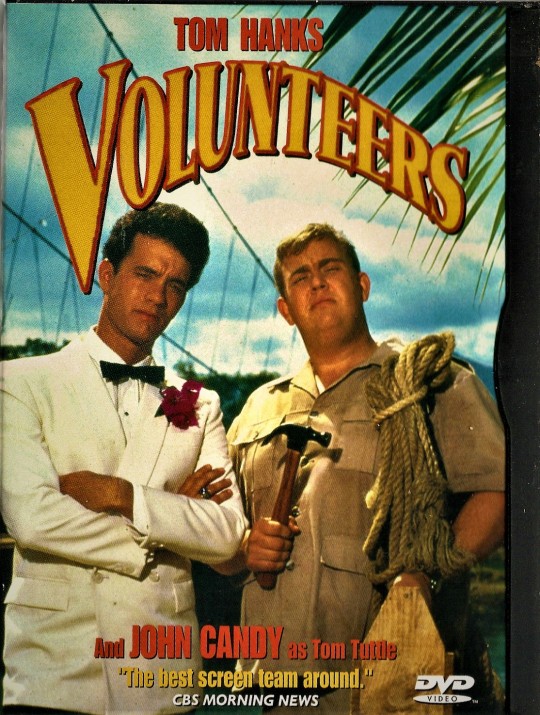
Bad movie I have Volunteers 1985
#Volunteers#Tom Hanks#John Candy#Rita Wilson#Tim Thomerson#Gedde Watanabe#George Plimpton#Ernest Harada#Allan Arbus#Xander Berkeley#Ji-Tu Cumbuka#Guillermo Río#Jacqueline Evans#Pamela Gual#Philip Guilmant#Chick Hearn#Virginia Kiser#Clyde Kusatsu#Jude Mussetter#Carlos Romano#Duncan Ross#Shakti Chen#Professor Toru Tanaka#Lonnie Wun#Harry Yorku#Doris Day#Rock Hudson#John F. Kennedy#Marilyn Monroe
4 notes
·
View notes
Text
Help support Gosling! I see lots of horse memes tumbling around, and if some of equestrian tumblr and equestrian peanut gallery tumblr (affectionate) can give her a hand, or at least pass it into other horse spheres of the internet, I'd appreciate it.
There are no graphic images are in this gofundme, just tubing and fluid swelling.
->
Gosling was born June 19th, 2023, a month earlier than she should've been. She was lively but unable to stand, with no suckling reflex. She had a small seroma on her chest, an umbilical hernia, and her legs were contracted.
Though two vets came and a feeding tube was placed in her nose to give her colostrum, within hours she was dehydrated and weak. She was rushed to the Marian Dupont-Scott Equine Hospital in Leesburg, Virginia. Being premature, her digestive system couldn’t handle the colostrum and she developed pneumonia. She was kept for a week on IV antibiotics, tube fed, helped to stand, and taught how to nurse. When she came home, she could (with help) stand for a few hours a day and gradually grew more lively, but continued to have high fevers and required antibiotics three times a day. The seroma on her chest continued to grow, until there was concern it might split her skin. A homemade compression vest was made, antibiotics were switched multiple times, and blood was repeatedly drawn, but the seroma never shrank and no clear cause was discovered.
At six weeks old, Gosling and her mother returned to the hospital to determine what to do about the seroma, since the usual treatments of compression and time were not effective. The doctors decided that in this case, the best course of action was to put off the umbilical hernia surgery, and lance and drain the seroma.
On August 9th, 2.25 litres of fluid was drained from Gosling’s chest.
The first week of care for Gosling’s life at the hospital cost 15,000 dollars. Veterinary care at home has cost almost 5,000 dollars since. We have not yet been given the bill for Gosling’s second stay at the hospital (where she remains as of this writing.)
The financial burden is tremendous. Please help us care for Gosling through this difficult start.
Information: Gosling is a purebred Cleveland bay filly. Cleveland Bays are a critically endangered breed of horse with approximately 1,000 purebreds in the world. Only about 15 foals are born each year, not enough to maintain current numbers. Because of this, fillies are incredibly precious to the future of the breed.
28 notes
·
View notes
Photo

We see the creek "Coal Run" in Wesley Township, Ohio. by Tim Kiser
Via Flickr:
According to the United States Geological Survey's Geographic Names Information System, there are 38 watercourses in the U.S. named "Coal Run," 35 of which are in the states of Ohio, Pennsylvania, and West Virginia. The other three are in Indiana and Virginia. I'm confident that at least a few of the 38 are prettier than this one.
Somebody needs to visit them all and take pictures. It won't be me!, I'm too busy.
Look for the tire in the water!
-----------------------
In Wesley Township in Washington County, Ohio, on June 30th, 2013, Coal Run as viewed from Boggs Road.
Coal Run flows to the West Branch Wolf Creek, which flows to Wolf Creek, which flows to the Muskingum River, which flows to the Ohio River &c.
2 notes
·
View notes
Photo

Poltergeist (Tobe Hooper, 1982)
Cast: Craig T. Nelson, JoBeth Williams, Beatrice Straight, Dominique Dunne, Oliver Robins, Heather O'Rourke, Michael McManus, Virginia Kiser, Martin Casella, Richard Lawson, Zelda Rubinstein, James Karen. Screenplay: Steven Spielberg, Michael Grais, Mark Victor. Cinematography: Matthew F. Leonetti. Production design: James H. Spencer. Film editing: Michael Kahn. Music: Jerry Goldsmith.
Poltergeist has Steven Spielberg written all over it -- literally, since he wrote the story and collaborated on the screenplay, but also thematically, since its setting is the suburbia in which he grew up and which he portrayed in so many of his films. So it's no surprise that the controversy over how much of the film is really Tobe Hooper's continues to this day. It's clear that Poltergeist is a lot closer in tone and technique to Close Encounters of the Third Kind (1977) and E.T. the Extra-Terrestrial (1982) than it is to The Texas Chain Saw Massacre (1972). That in itself should put an end to any arguments over authorship. I am not a fan of horror movies, and I found Hooper's earlier film simply unpleasant -- shocks without substance. Not that there's much substance in Poltergeist, either. It's full of hokum about the afterlife and exploitation of some elementary terrors, but not much else that would ever make me want to think about it, let alone watch it again.
1 note
·
View note
Text





WATCHING
I never saw it the full way through before. (I don't think) pretty good.
It's not horror like gore and all that, it's like the E.T. of horror. Spooky, but nothing scary than was in Indiana Jones.
#POLTERGEIST (1982)#Tobe Hooper#JoBeth Williams#Craig T. Nelson#Beatrice Straight#Dominique Dunne#Oliver Robins#Heather O'Rourke#Zelda Rubinstein#Richard Lawson#Martin Casella#James Karen#Michael McManus#Virginia Kiser#Steven Spielberg#supernatural horror#ghosts#horror#adventure film#watching#Halloween movies
3 notes
·
View notes
Photo


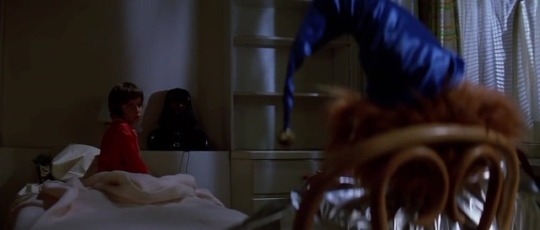

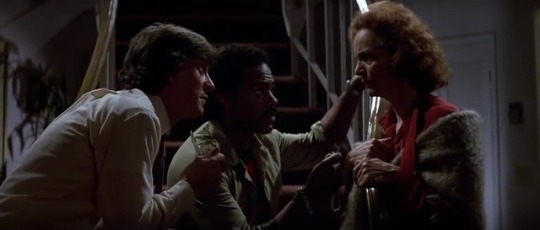





Poltergeist (1982) Director - Tobe Hooper, Cinematography - Matthew F. Leonetti “I don’t know what hovers over this house, but it was strong enough to punch a hole into this world and take your daughter away from you. It keeps Carol Anne very close to it and away from the spectral light. It LIES to her, it tells her things only a child could understand. It has been using her to restrain the others. To her, it simply IS another child. To us, it is the BEAST.”
#scenesandscreens#poltergeist#Tobe Hooper#craig t. nelson#JoBeth Williams#Beatrice Straight#Dominique Dunne#Oliver Robins#Heather O'Rourke#Michael McManus#Virginia Kiser#Richard Lawson#Martin Casella#Zelda Rubinstein
79 notes
·
View notes
Text
Careless in Suburbia (Poltergeist, 1982)
Careless in Suburbia (Poltergeist, 1982)
The Freeling family have a good life. Steve and Diane have three children. One evening they are awakened by their youngest, Carol Anne, who is talking to the TV. As days go by they notice unusual phenomena and not just Carol Anne watching static on the television. The dog responds to something nobody can see, the son is sure the tree outside his window is alive. After a traumatic night which…
View On WordPress
#Beatrice Straight#Craig T. Nelson#Dominique Dunne#E.T. the Extra-Terrestrial#Heather O&039;Rourke#James Karen#JoBeth Williams#Lou Perryman#Martin Casella#Michael McManus#Oliver Robins#Poltergeist#Richard Lawson#steven spielberg#tobe hooper#Virginia Kiser#Zelda Rubinstein
0 notes
Photo

#Repost @colonialwmsburg ・・・ We are thrilled to introduce you to another new arrival to Colonial Williamsburg Coach and Livestock's Rare Breeds program. Meet Fearnought a.k.a. Monty, a male Cleveland Bay foal born about a week ago to Isabella. . Full of spunk and energy, we’re pretty sure this little firecracker is just as happy he’s here as we are. Isabella and Monty will be at pasture in the Historic Area today near Monty's young cousin Valiant and his mom Fudge. . The joy of our new additions is the culmination of two years’ effort for the Coach and Livestock team and its supporters. Colonial Williamsburg’s Cleveland Bay program, launched in 2016, is possible entirely through the generosity of Carolyn and Lowell Larson of Burlington, Wisconsin; Claudette and Steve Tallon of Williamsburg; Jeanne Asplundh of Fort Washington, Pennsylvania and Cindy Kiser of Verona, Virginia. . . . . . . . . #colonial #history #visitwilliamsburg #visitvirginia #williamsburgva #loveva #historicaarea #dukeofgloucesterstreet #dogstreet #18thcentury #history #livinghistory #museum #williamsburg #visitvirginia #americanrevolution #wherehistorynevergetsold #bitsandbridles #rarebreeds #historicbreeds #geneticdiversity #coachandlivestock #livestock #horsesofinstagram #horses #clevelandbays #rarebreeds #babyhorse http://bit.ly/2XDPfWR
2 notes
·
View notes
Text
Virginia LB Micah Kiser wins Dudley Award
Virginia senior inside linebacker Micah Kiser was named the winner of the 2017 Dudley Award as the state’s top collegiate player on Sunday night at the annual Dudley Award Banquet in Richmond. The other finalists were linebacker Tremaine Edmunds of…
Virginia LB Micah Kiser wins Dudley Award
0 notes
Text
Redemption Island’ Contestant Was 56 – Deadline
Redemption Island’ Contestant Was 56 – Deadline
Ralph Kiser, a farmer from Lebanon, Virginia who competed against two of the biggest villains in the history of the CBS franchise has died, according to multiple reports. He was 56.
Kiser tried out for the show several times before landing a spot on Season 22 in 2010. Dubbed Survivor: Redemption Island, the cycle featured ubervillain Russell Hantz and the legendary Boston Rob Mariano, who…
View On WordPress
0 notes
Text
0 notes
Text
LA Rams 2018 Draft Grade
Here is the grade for the Los Angeles Rams 2018 draft
The Rams first selection was in the 3rd round when they took athletic offensive lineman Joseph Noteboom from TCU, he will likely need to make the team as a swing tackle and learn behind Andrew Whitworth. The next pick was Michigan State center Brian Allen who is technically clean but doesn’t consistently show elite strength or agility. John Franklin-Myers, defensive end from SFA was the next selection and showed very impressive production, size and burst and could be used as a 5 tech or possibly an edge rusher in the Rams 3-4 defense. Micah Kiser, linebacker from Virginia and though he doesn’t consistently show great pass coverage ability he can be an elite run defender. The next pick is outside linebacker Ogbonnia Okoronkwo form Oklahoma and will need to show the burst and pass rushing ability to make the roster, likely showing up as a situational pass rusher on the outside. John Kelly, runningback from Tennessee and will likely need to show the ability as a special teamer and inside the tackles runner. Jamil Demby is another athletic offensive lineman but will need to show the ability to play as the swing interior lineman. Sebastian Joseph, defensive tackle from Rutgers will likely need to play as a 5 tech in the Rams defense. The final 3 players picked are Louisville outside linebacker Trevon Young, TCU linebacker Travin Howard and SMU defensive end and pass rusher Justin Lawler. All will need to show the ability on special teams along with pass rushing ability to make the final cut. The Rams are another team without a 1st round selection but they were able to add impressive offensive line help and outside pass rushers along with a key situational linebacker in Kiser. Overall they deserve a B+ though not having an obvious starter hurts the grade
2 notes
·
View notes
Photo

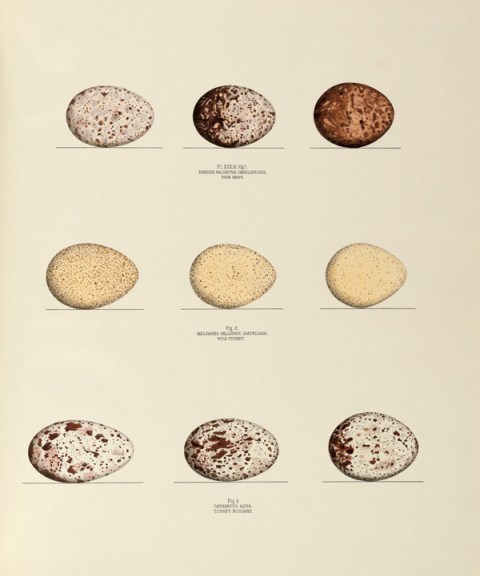
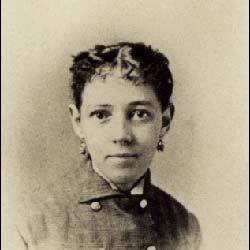

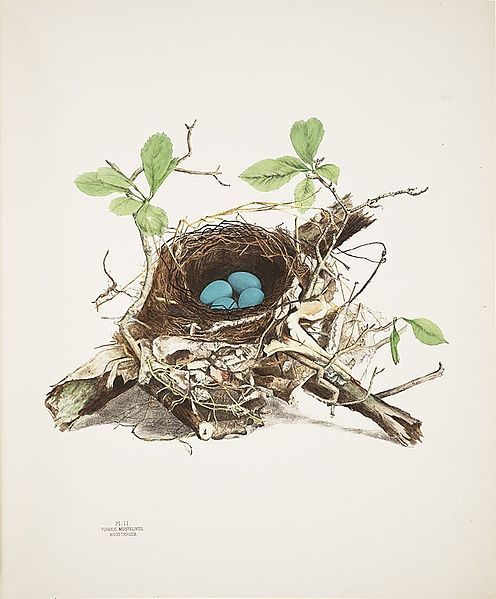
When she was only six years old, Genevieve Jones, known to her friends as Gennie, began accompanying her father Nelson, a medical student and amateur ornithologist, on buggy rides into the wilderness, searching for birds’ nests and collecting eggs to add to their make-shift cabinet of natural history.
Gennie had grown up a bright, curious young woman, fascinated with science, gifted in art, and an avid reader, but awkward and shy — unusually tall at nearly 6 feet, with a skin condition that made her appear flushed at all times. Still, she fell in love with a man ten years her senior, whom Kiser describes as “an exceptional musician and literary critic, but, unfortunately…a periodical drunkard.” In 1876, just before Gennie turned thirty, her parents broke off her engagement, concerned about her suitor’s drinking. To console her broken heart, Gennie went away to stay with her best friend Eliza’s parents in Pennsylvania, where she visited the Centennial International Exhibition in Philadelphia and saw some of the hand-colored engravings in Audubon’s now-iconic The Birds of America, noting that even Audubon had neglected to include eggs and nests as anything more than a decorative prop.
When she returned home to Circleville, Ohio, Gennie had grown unusually despondent. Her parents became increasingly concerned and, eventually, Nelson encouraged her to pursue her illustrations of nests and eggs, and collect them into a book — an idea he had previously rejected whenever Genie had brought it up, due to astronomical costs of creating a lavishly illustrated book, but was now ready to support it as a much-needed distraction from Genie’s anguish, for which he felt personally responsible.
Family and friends rushed in to support the project and Gennie set out to illustrate the 130 species of birds that nested in Ohio, many common throughout the rest of America. She and Eliza labored over the intricate illustrations, while Nelson devised a business plan to produce 100 copies of the book, to be called Illustrations of the Nests and Eggs of Birds of Ohio, and sell them by subscription in approximately 23 parts, charging $5 for the hand-painted version and $2 for the uncolored version. When the first twenty subscribers were secured, including some of the country’s most prominent ornithologists, production began. Kiser describes the astonishingly laborious and scientific process, reminding us of how far we’ve come with design and printing technology:
Gennie and Eliza drew illustrations in wax pencil on both sides of sixty-five-pound lithographic stones. Then Howard placed the stones into crates that were shipped eighty-nine miles to Cincinnati, where [the printing company’s] artisans fixed the drawings with a solution of nitric acid, applied ink to the surface of the stones, and printed test proofs to determine the quality of the renderings. When errors were found, the ink was cleaned off and the stones were recrated and shipped back to Circleville for corrections. The first stones made several trips back and forth before the artists conquered the challenges of keeping the points on the wax crayons sharp and the edges of the line drawings crisp.
In 1878, the first three lithographs of part one were finished and sent to ornithological publications for review, earning Gennie’s artwork praise as equal to and even better than Audubon’s. Elliott Coues, a prominent ornithology bulletin editor, wrote:
I had no idea that so sumptuous and elegant a publication was in preparation, and am pleased that what promises to be one of the great illustrated works on North American Ornithology should be prepared by women.
Once the first batch was mailed in 1879, the overwhelmingly positive response nearly doubled the number of subscribers to 39 — 34 for the hand-colored version and 5 for the uncolored — including former President Rutherford B. Hayes and a young Harvard student by the name of Theodore Roosevelt. But fate threw Genie a cruel curveball — a mere month after the first part was mailed, she contracted typhoid fever and fell violently ill. On her deathbed, she instructed her brother to keep the project alive and enlist the help of their mother in producing the illustrations. She died on Sunday, August 17, 1879, at the age of thirty-two.
In the years that followed, Gennie’s suitor, overcome with sorrow, committed suicide. Her family remained in profound grief and shock, from which their only solace was in bringing Gennie’s vision to life in its full glory. Her mother, Virginia, learned the lithographic technique and began illustrating the eggs and nests Gennie had collected. Kiser writes:
Gennie’s book became the Jones family’s transitional object, a physical entity with which they could distract themselves from their heartache and into which they could invest their passion and energy. Virginia poured all the love she could no longer give to her daughter into illustrating the nests and eggs. Virginia had never drawn or painted anything that required scientific accuracy before…. Despite her grief, she struggled with overcoming her casual artistic style and transformed herself into a scientific observer. Analysis and intellectual rigor were essential, because an artist does not draw what she sees, she draws what she understands.
http://blog.biodiversitylibrary.org/2011/09/book-of-week-birds-and-their-nests.html
https://www.brainpickings.org/2012/06/27/americas-other-audubon/
http://ornithologyexchange.org/forums/blog/19/entry-1069-i-spy-something-fowl/
http://www.sil.si.edu/ondisplay/nestsandeggs/essay.htm
12 notes
·
View notes
Photo

INSIDE LINEBACKERS
1 - Roquan Smith - Georgia
2 - Rashaan Evans - Alabama
3 - Josey Jewell - Iowa
4 - Micah Kiser - Virginia
5 - Christian Sam - Arizona St.
6 - Tegray Scales - Indiana
7 - Jack Cichy - Wisconsin
8 - Shaun Dion Hamilton - Alabama
9 - Nick DeLuca - North Dakota St.
10 - Jason Cabinda - Penn St.
11 - Azeem Victor - Washington
12 - Andre Smith - North Carolina
13 - Genard Avery - Memphis
14 - Kenny Young - UCLA
15 - Joel Iyiegbuniwe - Western Kentucky
16 - Keishawn Bierria - Washington
17 - Chris Worley - Ohio St.
18 - Nyles Morgan - Notre Dame
19 - Ja’Whaun Bentley - Purdue
20 - Frank Ginda - San Jose St.
21 - Andrew Motuapuaka - Virginia Tech
22 - Joel Lanning - Iowa St.
23 - Quentin Poling - Ohio
24 - Auggie Sanchez - South Florida
25 - Eric Boggs - Appalachian St.
26 - Al-Rasheed Benton - West Virginia
27 - Courtney Love - Kentucky
28 - DJ Calhoun - Arizona St.
29 - Myles Pierce - Citadel
2 notes
·
View notes
Text
Hop Take: For National Craft Breweries Like New Belgium, Independence Is Not Sustainable

Unless you live under a beer can-shaped rock, you’ve likely heard the news that New Belgium Brewing will be acquired by Lion Little World Beverages, a subsidiary of Kirin, a Japanese brewing conglomerate.
New Belgium co-founder Kim Jordan confirmed the announcement with a letter on Tuesday, saying that Kirin’s subsidiary will acquire 100 percent of the Colorado-based craft brewery. The deal is expected to close by the end of 2019, dependent on New Belgium’s employee-owners agreeing to the sale.
Wow — New Belgium, the fourth-largest craft brewer in the US, will be sold to a Kirin subsidiary. @Brewbound reports this is the end of the brewery’s employee-owned status.https://t.co/YPnqp2hwH5
— Leah Douglas (@leahjdouglas) November 19, 2019
This marks another American craft beer pioneer that will no longer be considered “craft” under the Brewers Association definition. It’s far from the first to do so, and it certainly won’t be the last.
New Belgium’s sale reiterates the bleak reality of successful national beer brands: Success is not sustainable once you reach a certain size. New Belgium is (was) 100 percent employee-owned. It makes some of the most popular beers in the country, including Fat Tire, its Voodoo IPA series, and a stellar lineup of sour beers. It’s carefully stepping into the FMB category with its Mural Agua Fresca. And in 2018, it was the fourth-largest craft brewing company in the country, out of more than 7,000.
And still, the economics of operating at that scale are impossible to sustain without selling. This is true of many other top craft breweries, too.
I see New Belgium was bought out and #beertwitter is mad. I can’t remember the last time I even considered buying a NB beer. Large national brands aren’t exciting and the purchase is usually supply chain related.
— Surly Bearded Viking Ginger (@Wiscobeergeek) November 19, 2019
Looking at the other BA-defined craft breweries, VinePair co-founder Josh Malin cleverly pointed out how the mighty are falling, starting with the top 15 craft brewing companies of 2018:
Yuengling produces sub-par light lager, and no beer geek considers it craft.
Boston Beer Co. is thriving thanks to flavored malt beverages (FMBs) such as Truly Hard Seltzer and Twisted Tea. It recently beefed up its beer portfolio by purchasing Dogfish Head Craft Brewery in May 2019.
Sierra Nevada’s Hazy Little Thing IPA is one of the most important IPAs right now. But it took impressive engineering to turn the brewery around after two years of falling sales of its flagship Sierra Nevada Pale Ale.
New Belgium sold to Kirin, one of the largest brewing companies in the world.
Duvel Moortgat, a Belgian brewery most definitely considered “big” by small(er) independent breweries in Belgium, owns Firestone Walker, Boulevard Brewing, and Brewery Ommegang in the U.S.
Gambrinus owns Shiner Beer and Truman Pils. Good for them!
Bell’s Brewery is kickin’ it, but it also pulled back distribution in Virginia and is in the midst of a dispute with a distributor there.
CANarchy, a brewery group including Oskar Blues, Cigar City, Three Weavers, Perrin, Deep Ellum, and Utah Brewers Cooperative’s Squatters Craft Beers and Wasatch Brewery, is backed by private equity firm Fireman Capital.
Stone Brewing has been ginning up press for almost two years now after suing MillerCoors in February 2018. On top of that, it shuttered its Berlin brewery, handing the keys over to BrewDog in April 2019. And its $90 million “True Craft” investment fund went by the wayside.
Deschutes laid off 10 percent of its employees last year and cancelled plans to build a new brewery in Virginia this year.
Artisanal Brewing Ventures — comprised of Victory Brewing, Southern Tier Brewing, Sixpoint Brewery, and, as of Wednesday, Nov. 20, 2019, Bold Rock Cider — is another rollup.
Brooklyn Brewery took investment from Kirin to the highest possible percentage (24.5 percent) to still be considered craft/independent.
Dogfish Head sold to Boston Beer.
SweetWater Brewing took private equity money from TSG Consumer Partners.
Minhas is a mystery.
I wish I was a little bit taller
I wish I was a baller
I wish I was a New Belgium employee owner
— Michael Kiser (@mpkiser) November 19, 2019
The message in so many bottles is clear: Staying afloat as a national or mid-sized brewery is nearly impossible in the current market. I predict we’ll continue to see breweries like these — Sierra Nevada, Bell’s, and Deschutes are probably next — merge, sell, or take private investment to keep treading water (beer?) in years to come.
Artisanal Brewing Ventures Acquires Hard Cider/Seltzer Brand
On Wednesday, Artisanal Brewing Ventures (ABV), owner of Victory Brewing, Southern Tier Brewing, and Sixpoint Brewery, announced the acquisition of Bold Rock Cider. The cider and seltzer maker is the first non-beer partner to join the group, and the second-most popular cider brand in the U.S., according to ABV.
“Bold Rock’s portfolio is a perfect complement to ABV’s other partner breweries by bringing consumers a leading hard cider, a new hard seltzer and a line of canned cocktails,” John Coleman, CEO, Artisanal Brewing Ventures, said in a press release.
And so, another craft brewery group moves “beyond beer” to please promiscuous American palates. The future is now, people.
The article Hop Take: For National Craft Breweries Like New Belgium, Independence Is Not Sustainable appeared first on VinePair.
source https://vinepair.com/articles/hop-take-new-belgium-kirin-acquisition/
0 notes
Text
Hop Take: For National Craft Breweries Like New Belgium Independence Is Not Sustainable

Unless you live under a beer can-shaped rock, you’ve likely heard the news that New Belgium Brewing will be acquired by Lion Little World Beverages, a subsidiary of Kirin, a Japanese brewing conglomerate.
New Belgium co-founder Kim Jordan confirmed the announcement with a letter on Tuesday, saying that Kirin’s subsidiary will acquire 100 percent of the Colorado-based craft brewery. The deal is expected to close by the end of 2019, dependent on New Belgium’s employee-owners agreeing to the sale.
Wow — New Belgium, the fourth-largest craft brewer in the US, will be sold to a Kirin subsidiary. @Brewbound reports this is the end of the brewery’s employee-owned status.https://t.co/YPnqp2hwH5
— Leah Douglas (@leahjdouglas) November 19, 2019
This marks another American craft beer pioneer that will no longer be considered “craft” under the Brewers Association definition. It’s far from the first to do so, and it certainly won’t be the last.
New Belgium’s sale reiterates the bleak reality of successful national beer brands: Success is not sustainable once you reach a certain size. New Belgium is (was) 100 percent employee-owned. It makes some of the most popular beers in the country, including Fat Tire, its Voodoo IPA series, and a stellar lineup of sour beers. It’s carefully stepping into the FMB category with its Mural Agua Fresca. And in 2018, it was the fourth-largest craft brewing company in the country, out of more than 7,000.
And still, the economics of operating at that scale are impossible to sustain without selling. This is true of many other top craft breweries, too.
I see New Belgium was bought out and #beertwitter is mad. I can’t remember the last time I even considered buying a NB beer. Large national brands aren’t exciting and the purchase is usually supply chain related.
— Surly Bearded Viking Ginger (@Wiscobeergeek) November 19, 2019
Looking at the other BA-defined craft breweries, VinePair co-founder Josh Malin cleverly pointed out how the mighty are falling, starting with the top 15 craft brewing companies of 2018:
Yuengling produces sub-par light lager, and no beer geek considers it craft.
Boston Beer Co. is thriving thanks to flavored malt beverages (FMBs) such as Truly Hard Seltzer and Twisted Tea. It recently beefed up its beer portfolio by purchasing Dogfish Head Craft Brewery in May 2019.
Sierra Nevada’s Hazy Little Thing IPA is one of the most important IPAs right now. But it took impressive engineering to turn the brewery around after two years of falling sales of its flagship Sierra Nevada Pale Ale.
New Belgium sold to Kirin, one of the largest brewing companies in the world.
Duvel Moortgat, a Belgian brewery most definitely considered “big” by small(er) independent breweries in Belgium, owns Firestone Walker, Boulevard Brewing, and Brewery Ommegang in the U.S.
Gambrinus owns Shiner Beer and Truman Pils. Good for them!
Bell’s Brewery is kickin’ it, but it also pulled back distribution in Virginia and is in the midst of a dispute with a distributor there.
CANarchy, a brewery group including Oskar Blues, Cigar City, Three Weavers, Perrin, Deep Ellum, and Utah Brewers Cooperative’s Squatters Craft Beers and Wasatch Brewery, is backed by private equity firm Fireman Capital.
Stone Brewing has been ginning up press for almost two years now after suing MillerCoors in February 2018. On top of that, it shuttered its Berlin brewery, handing the keys over to BrewDog in April 2019. And its $90 million “True Craft” investment fund went by the wayside.
Deschutes laid off 10 percent of its employees last year and cancelled plans to build a new brewery in Virginia this year.
Artisanal Brewing Ventures — comprised of Victory Brewing, Southern Tier Brewing, Sixpoint Brewery, and, as of Wednesday, Nov. 20, 2019, Bold Rock Cider — is another rollup.
Brooklyn Brewery took investment from Kirin to the highest possible percentage (24.5 percent) to still be considered craft/independent.
Dogfish Head sold to Boston Beer.
SweetWater Brewing took private equity money from TSG Consumer Partners.
Minhas is a mystery.
I wish I was a little bit taller
I wish I was a baller
I wish I was a New Belgium employee owner
— Michael Kiser (@mpkiser) November 19, 2019
The message in so many bottles is clear: Staying afloat as a national or mid-sized brewery is nearly impossible in the current market. I predict we’ll continue to see breweries like these — Sierra Nevada, Bell’s, and Deschutes are probably next — merge, sell, or take private investment to keep treading water (beer?) in years to come.
Artisanal Brewing Ventures Acquires Hard Cider/Seltzer Brand
On Wednesday, Artisanal Brewing Ventures (ABV), owner of Victory Brewing, Southern Tier Brewing, and Sixpoint Brewery, announced the acquisition of Bold Rock Cider. The cider and seltzer maker is the first non-beer partner to join the group, and the second-most popular cider brand in the U.S., according to ABV.
“Bold Rock’s portfolio is a perfect complement to ABV’s other partner breweries by bringing consumers a leading hard cider, a new hard seltzer and a line of canned cocktails,” John Coleman, CEO, Artisanal Brewing Ventures, said in a press release.
And so, another craft brewery group moves “beyond beer” to please promiscuous American palates. The future is now, people.
The article Hop Take: For National Craft Breweries Like New Belgium, Independence Is Not Sustainable appeared first on VinePair.
Via https://vinepair.com/articles/hop-take-new-belgium-kirin-acquisition/
source https://vinology1.weebly.com/blog/hop-take-for-national-craft-breweries-like-new-belgium-independence-is-not-sustainable
0 notes